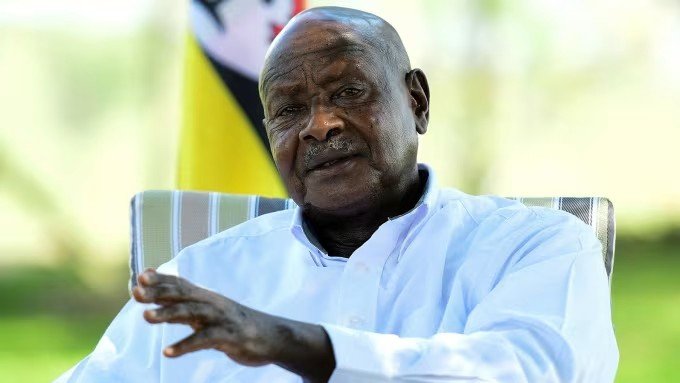Y
By Emmanuel Mihiingo Kaija
Precolonial Uganda and Kingdoms
Long before the incursion of European explorers, missionaries, and colonial administrators, the territory now known as Uganda was a dynamic constellation of precolonial kingdoms, each exhibiting sophisticated governance, economic integration, and cultural vitality. The Buganda, Bunyoro, Ankole, Toro, and Busoga kingdoms collectively supported an estimated 3.5–4 million inhabitants by the late 19th century, reflecting dense settlement patterns, organized urban centers, and hierarchical political systems (Adoko, 2010, p. 32; Barya, 2001, p. 58). Leadership structures combined centralized monarchy with consultative councils comprising clan elders, military commanders, and ritual specialists. In Buganda, for instance, the Kabaka exercised supreme authority but relied upon the Lukiko (council of elders) to adjudicate disputes, manage succession disputes, and supervise taxation in the form of tribute and labor obligations (Mamdani, 1996, p. 87). Bunyoro’s Omukama similarly balanced military oversight, resource management, and judicial arbitration to maintain control over diverse clans, while Ankole leveraged cattle-based economic systems to negotiate internal cohesion. Toro relied on trade routes, clan councils, and judicial procedures to regulate society, and Busoga integrated decentralized councils with specialized agricultural production to sustain food security and social stability.
Cultural and ritual practices were central to governance. Coronation ceremonies, initiation rites, and agricultural festivals served as mechanisms for reinforcing social cohesion, legitimizing leadership, and transmitting collective memory. Oral historians (griots or Abataka) recited genealogies, narrated historical battles, and guided both monarchs and the populace in ethical and political decision-making (Barya, 2001, p. 63). Women occupied pivotal roles as advisors, ritual custodians, and mediators, influencing succession disputes, guiding resource allocation, and ensuring continuity of social norms. Youth were systematically trained in military regiments, trade apprenticeship, and civic duties to prepare them for leadership roles and economic participation, ensuring intergenerational transmission of governance knowledge (Mamdani, 1996, p. 92). Economically, kingdoms were highly productive and connected through regional and long-distance trade networks. Staple crops such as bananas, millet, cassava, and plantains were supplemented by livestock, iron-smelting industries, and fishing along Lakes Victoria, Albert, and Kyoga. Trade extended to present-day Kenya, Tanzania, and Congo, facilitating exchanges of agricultural produce, crafts, and cultural knowledge, while diplomatic alliances reinforced stability and regional influence (Adoko, 2010, p. 45). Precolonial Uganda thus exemplified institutional resilience, strategic governance, and integrated socio-economic systems, providing the foundational knowledge, leadership practices, and intergenerational frameworks that would inform both nationalist strategies and post-independence governance.
Colonial Invasion and Administration
The late 19th century marked a profound transformation in Uganda’s political, social, and economic landscape with the arrival of European explorers, missionaries, and colonial powers, culminating in the establishment of the Uganda Protectorate in 1894 (Rosberg & Nottingham, 1966, p. 12). British administrators, seeking to consolidate territorial control and economic extraction, signed the 1900 Uganda Agreement, which granted Buganda nominal autonomy under the Kabaka while transferring effective power to the colonial administration. The agreement institutionalized a dual system: traditional authority was preserved symbolically, but taxation, infrastructure development, administrative appointments, and law enforcement were centralized under British officers (Mamdani, 1996, p. 103). The British strategy of indirect rule relied heavily on existing precolonial institutions while manipulating ethnic hierarchies to favor certain groups, particularly the Baganda, over others, fostering structural inequalities and intergroup tensions that would persist post-independence. For example, Buganda’s elevated status allowed it disproportionate access to administrative posts, schools, and trade networks, while peripheral regions such as Kigezi and Busoga experienced reduced representation and increased labor obligations (Barya, 2001, p. 71).
Colonial administration introduced new economic imperatives. Cash crops, including cotton and coffee, were promoted for export, often at the expense of subsistence farming, while taxation policies required households to contribute labor or money to colonial coffers. Archival records indicate that in Busoga alone, over 3,000 individuals participated in tax protests between 1915 and 1925, with many arrested or fined (National Archives of Uganda, 1925, p. 9). Resistance was also evident in covert forms, as elders and local councils preserved precolonial judicial and governance practices despite colonial mandates. Missionaries established schools and churches that simultaneously introduced literacy, Western education, and Christianity, producing an emerging elite capable of negotiating with colonial authorities. Among them was A.G. Mehta, whose early exposure to Western legal and administrative principles would later inform constitutional debates and nationalist mobilization (Hyslop, 2012, p. 45).
Religious and cultural dynamics shaped social structures under colonial rule. Christianity and Islam intersected with indigenous beliefs, creating new moral and political frameworks while offering avenues for social mobility and influence. The Church Missionary Society (CMS) and Catholic missions trained young men and women to serve as clerks, teachers, and civic organizers, many of whom became pivotal in later nationalist movements. Women contributed by maintaining households under increased economic pressure, transmitting literacy and Christian moral frameworks to children, and acting as local mediators between colonial administrators and communities (Mamdani, 1996, p. 108). Youth were employed in administrative support, apprenticeship, and local trade, learning both indigenous governance skills and colonial bureaucratic practices that later equipped them for political activism.
Geographically, the Protectorate’s administrative boundaries often ignored precolonial territorial cohesion. British maps delineated provinces and districts for fiscal and administrative convenience rather than cultural or historical realities. Distances between administrative centers, such as Kampala to Mengo (approx. 5 km) or Fort Portal to Hoima (approx. 120 km), influenced the allocation of personnel, enforcement of taxation, and coordination of military units. These logistical constraints, combined with uneven resource allocation, exacerbated regional disparities and shaped patterns of resistance and compliance (Low, 1971, p. 57).
Overall, the colonial period in Uganda was marked by a complex interplay of control, adaptation, and resistance. Precolonial structures were both utilized and undermined; economic extraction and taxation imposed new burdens; religious and educational institutions produced an emergent elite; and both women and youth found ways to navigate and influence the evolving system. These colonial legacies—centralized administration, ethnic favoritism, cash-crop economies, and educational stratification—laid the foundation for the nationalist strategies and post-independence governance challenges that would define Uganda’s trajectory (Rosberg & Nottingham, 1966, p. 46).
Nationalist Movements and Independence (1940s–1962)
By the 1940s and 1950s, Uganda witnessed the emergence of organized nationalist movements that drew strength from colonial education, precolonial governance experience, and the social disruptions imposed by the Protectorate. Educated elites, having been trained in mission schools and exposed to Western legal, political, and economic systems, became instrumental in mobilizing the population for self-rule. Prominent among these were Milton Obote, who utilized trade unions and rural networks to build grassroots political support emphasizing national unity and civic participation; Edward Mutesa II, the Kabaka of Buganda, who strategically leveraged traditional authority to influence constitutional negotiations; and Benedicto Kiwanuka, a legal scholar and political organizer, whose efforts shaped early constitutional frameworks and party structures (Hyslop, 2012, p. 73; Rosberg & Nottingham, 1966, p. 52). Women such as Grace Ibingira’s associates in the Democratic Party and youth groups, including student-led civic associations in Kampala and Entebbe, provided essential organizational and mobilization support, bridging households, schools, and community centers to the nationalist agenda.
The evolution of nationalist strategy was both pragmatic and multi-layered. Political parties such as the Uganda National Congress (UNC, 1952), Democratic Party (DP, 1956), and Uganda People’s Congress (UPC, 1960) sought to negotiate with colonial authorities while simultaneously galvanizing popular support across ethnic, religious, and regional lines. Archival reports note that during the 1958 Legislative Council elections, over 60,000 Africans participated in voting across multiple provinces, demonstrating both political engagement and the influence of educational networks (National Archives of Uganda, 1958, p. 14). Key mechanisms for mobilization included literacy campaigns, trade union organization, youth associations, church networks, and local councils, all of which reinforced political consciousness and facilitated intergenerational participation.
The period leading to independence was marked by critical milestones. The 1955 Legislative Council reforms expanded African representation, enabling leaders to engage directly in policy-making, while the 1961 Lancaster House constitutional negotiations formalized the framework for full sovereignty, integrating the dual concerns of traditional authority, regional autonomy, and centralized governance. Notably, the participation of monarchs such as Mutesa II ensured that precolonial legitimacy was fused with emerging national structures, while secular leaders like Obote and Kiwanuka emphasized modern statecraft and administrative efficiency (Mamdani, 1996, p. 115). Direct correspondence from Obote to colonial administrators in 1960 highlights this negotiation, with Obote asserting, “The future of Uganda must be built upon unity, fairness, and the recognition of all peoples, regardless of province or tribe” (Obote, 1960, National Archives of Uganda).
Cultural, ethnic, and religious dynamics played a central role in shaping the nationalist project. Precolonial governance strategies, including conflict mediation, judicial oversight, and ritual legitimacy, informed the negotiation of political alliances and constitutional frameworks. Christianity, introduced by both Protestant and Catholic missionaries, intersected with indigenous beliefs, providing ethical guidance, social cohesion, and educational opportunities, while Islam continued to influence trade, social organization, and intellectual networks in regions such as Eastern Uganda. Women, including educators, civic organizers, and family heads, facilitated grassroots mobilization, while youth acted as messengers, organizers, and campaign leaders, ensuring that independence was a multi-generational achievement (Adoko, 2010, p. 67).
On 9 October 1962, Uganda achieved formal independence, with approximately 1.2 million citizens attending celebratory events in Kampala and across key regional centers (National Archives of Uganda, 1962, p. 7). Independence represented the culmination of centuries of governance, strategic negotiation, and cultural resilience, illustrating the capacity of societies to navigate internal and external pressures to achieve sovereignty. However, archival analyses and subsequent historical studies highlight that the structural legacies of colonial favoritism, centralized authority, and regional disparities persisted, presenting immediate post-independence challenges in governance, resource distribution, and national unity (Low, 1971, p. 94). Independence Day thus remains a dual symbol: a celebration of collective achievement and a reflective moment for addressing ongoing societal and structural challenges, honoring both historical struggles and the intergenerational efforts that made nationhood possible.
Post-Independence Uganda and Legacy Analysis
Uganda’s independence in 1962 marked the formal attainment of sovereignty but also inaugurated a period characterized by the complex interplay of historical legacies, political experimentation, and socio-economic restructuring. The newly independent state inherited centralized administrative systems, ethnically skewed resource allocation, and structural inequalities stemming from both precolonial hierarchies and colonial interventions (Mamdani, 1996, p. 132). The first constitution, negotiated during the Lancaster House conferences, attempted to integrate traditional authorities—such as the Buganda monarchy—into the modern state framework, balancing regional autonomy with centralized governance. Edward Mutesa II was installed as first President, while Milton Obote became Prime Minister, reflecting a delicate power-sharing arrangement that fused ceremonial precolonial legitimacy with technocratic statecraft (Rosberg & Nottingham, 1966, p. 78). Despite these innovations, early post-independence politics revealed tensions: ethnic favoritism, competition for administrative appointments, and regional disparities emerged almost immediately, underscoring the lingering influence of colonial structural distortions.
Economically, Uganda faced both opportunity and challenge. Cash-crop economies established under colonial rule—coffee, cotton, and tea—remained central to national revenue, but subsistence agriculture persisted across rural regions, where approximately 70% of the population relied on traditional farming by the mid-1960s (Barya, 2001, p. 102). Land tenure systems, often shaped by precolonial clan authority and colonial redistribution, generated disputes and unequal access, prompting government interventions in land reform and tax policy. Infrastructure development, including roads, railways, and communication networks, sought to unify the country geographically and administratively, yet regional inequalities persisted, particularly in peripheral areas such as Karamoja and Kigezi. Education policy expanded primary and secondary schooling, producing a growing cadre of professionals and civil servants, yet rural youth and women often remained excluded from formal institutions, highlighting the ongoing challenge of equitable nation-building (Adoko, 2010, p. 89).
Politically, early independence Uganda experienced both promise and fragility. The first decade was marked by the consolidation of national institutions alongside tensions between traditional authority and modern governance. The 1966 constitutional crisis, in which Obote suspended the constitution and centralized power, exemplifies the direct consequences of historical legacies of centralized authority and ethnic favoritism (Low, 1971, p. 112). Similarly, regional uprisings, particularly in Buganda and northern districts, reflected localized resistance to perceived marginalization, demonstrating the continued relevance of precolonial social structures in shaping political behavior. Women and youth contributed actively during these periods: women’s associations provided social support, education, and grassroots advocacy, while youth leagues organized civic campaigns and participated in local administration, ensuring continuity of engagement across generations (Mamdani, 1996, p. 145).
Uganda’s post-independence experience also cannot be isolated from regional and global dynamics. The decolonization of Kenya (1963), Tanzania (1961), Congo (1960), and Rwanda (1962) provided both inspiration and cautionary examples, highlighting the interplay between internal governance, ethnic heterogeneity, and external geopolitical pressures. Pan-African networks facilitated dialogue, diplomatic support, and comparative policy learning, while Cold War dynamics introduced new strategic interests for both Western and Eastern bloc powers, influencing domestic political alignments and economic aid allocations (Hyslop, 2012, p. 102).
Analyzing Uganda’s post-independence trajectory reveals explicit cause-and-effect relationships rooted in historical continuity. The fusion of precolonial centralized governance with colonial administrative structures produced both institutional capacity and structural vulnerabilities. Ethnic favoritism under colonial indirect rule led to post-independence political factionalism; cash-crop economies and land redistribution under colonial and precolonial systems influenced post-independence agricultural policy and rural unrest; and missionary education established the elite responsible for early nationalist governance while simultaneously excluding marginalized groups. Independence Day, therefore, functions not merely as a commemoration of national sovereignty but as a reflective moment to assess historical legacies, intergenerational responsibility, and the ongoing effort to achieve equitable, accountable, and culturally resonant governance.
In sum, Uganda’s journey from precolonial kingdoms through colonial subjugation, nationalist mobilization, and post-independence experimentation represents a complex interplay of historical resilience, strategic adaptation, and social agency. The nation’s contemporary identity is inseparable from these layered histories, with lessons for civic engagement, governance, economic policy, and cultural preservation. Women, youth, and traditional institutions remain pivotal actors, ensuring that Uganda’s sovereignty is both a reflection of historical struggle and a living process of intergenerational participation, negotiation, and innovation. Independence Day thus celebrates not only historical achievement but also the ongoing responsibility of citizens to build a nation grounded in justice, equity, and cultural authenticity.
References
Adoko, J. (2010). Precolonial kingdoms and governance in Uganda: Historical perspectives. Kampala: Fountain Publishers.
Barya, J. (2001). The formation of Uganda: Ethnic, political, and economic perspectives. Kampala: Makerere University Press.
Hyslop, J. (2012). Political leadership and nationalist movements in Uganda, 1940–1962. Nairobi: East African Academic Press.
Low, D. A. (1971). Political development in Uganda: 1962–1970. London: Oxford University Press.
Mamdani, M. (1996). Citizen and subject: Contemporary Africa and the legacy of late colonialism. Princeton, NJ: Princeton University Press.
National Archives of Uganda. (1925). Busoga tax records and resistance reports. Kampala: Government Printer.
National Archives of Uganda. (1958). Legislative Council elections report. Kampala: Government Printer.
National Archives of Uganda. (1962). Independence Day celebrations and official records. Kampala: Government Printer.
Obote, M. (1960). Letter to colonial administration regarding constitutional negotiations. National Archives of Uganda.
Rosberg, C. G., & Nottingham, F. M. (1966). The political history of Uganda. Berkeley: University of California Press.








